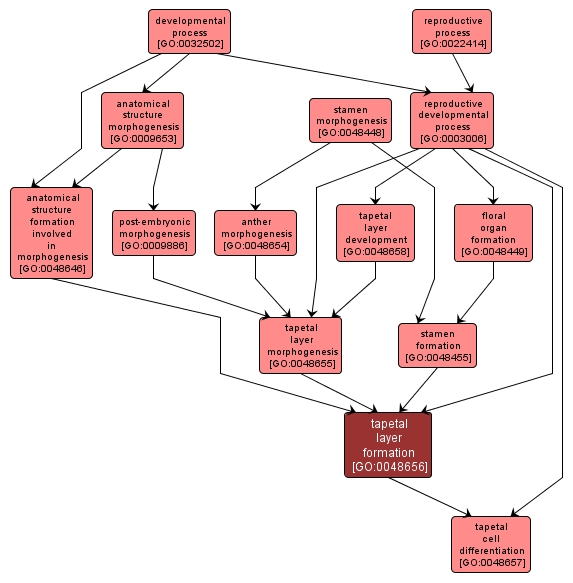GO TERM SUMMARY
|
| Name: |
tapetal layer formation |
| Acc: |
GO:0048656 |
| Aspect: |
Biological Process |
| Desc: |
The process that gives rise to the tapetal layer. This process pertains to the initial formation of a structure from unspecified parts. The tapetum is a layer of cells that provides a source of nutrition for the pollen grains as they mature. |
| Synonyms:
|
|

|
INTERACTIVE GO GRAPH
|














